 
| ||
|
|
|
CLASS II vs. CLASS III VIDEO POKER MACHINES
by Henry Tamburin
Iíve received a lot of questions about video poker machines in casinos on Native American reservations. To get the answers on how these machines work, I interviewed Jim Coleman, Senior Product Manager at IGT (the company that manufactures video poker machines for casinos).
Before I begin, let me give you a brief history lesson on how Class I, II, and III gaming came about. The federal Indian Gaming Regulatory Act established the three classes in 1988, which defined what Indian tribes in a given jurisdiction can and canít offer in their casinos. Class I gaming is defined as "traditional Indian gaming and social gaming for minimal prizes." Since Class I doesnít involve commercial gambling, Iíll ignore it for this article. Class II gaming means bingo with at least two players, with the drawing of balls, and a "game-ending pattern." (Class II also includes lotto, punch boards, tip jars, and pull tabs, but for this article, weíll ignore them.) Class III gaming is full-scale gambling (e.g., Las Vegas or Atlantic City), including table games (blackjack, craps, etc.), slots, and video poker. Tribes must negotiate compacts with the states to conduct Class III gaming; otherwise, they are limited to Class II gaming.
Iíve listed in the following table the major differences between a Class II and Class III video poker machine. Iíll explain the information in each row in more detail so you can fully understand the differences.
|
Class II |
Class III |
|
|
How the final outcome is determined |
Result of a winning pattern from an electronic Bingo Game |
Result of a random selection of cards by a random number generator |
|
How the odds are determined |
Odds of hitting a certain pattern on a bingo card |
Odds of randomly drawing cards from a 52-card deck |
|
Does playing strategy matter? |
No. Results are predetermined by the pattern of the bingo game. Nothing the player does on the draw will change the outcome. |
Playing strategy can influence the final outcome. Players can achieve theoretical returns for any game by playing their hands perfectly. |
|
Can a player determine the Expected return of the game from the paytable? |
No. |
Yes. |
|
How do you know the machine is Class II or III |
Look for the small display of a bingo card on the machine |
If you donít see a bingo card, itís probably Class III |
How the Outcome is Determined
A Class III video poker machine has a Random Number Generator (RNG) software program that randomly selects cards from a 52 virtual deck (assuming no wild cards). When you press the deal button, the RNG selects five cards at random, which is the initial five cards that you see on your screen. The RNG continues to shuffle the remaining 47-card deck until you decide which cards you want to hold. When you hit the draw button, the shuffling stops and the replacement cards are selected from the top of the shuffled 47-cards deck. By law, each card has to have the same probability of being selected on the deal and draw; therefore, the probability of selecting any card is the same as it would be if you randomly drew cards from a freshly shuffled deck of cards. The probability of getting a winning hand by this random selection process is well known (e.g., the probability of getting a royal flush is 1 in roughly 40,000 hands).
A Class II video poker machine does not have a RNG inside of it. Instead, the machine is connected to a central computer server whose function is to draw bingo balls. The result of the bingo game is a "game-ending pattern." This is a pattern of numbers on a bingo card, such as four-in-row, four corners, round robin, etc., that ends the bingo game with a winning result and a prize. There is a specific timeframe (e.g., 20 milliseconds) in which anyone in the casino that hits the deal button on a video poker machine (or spin button on a slot machine) is entered into an electronic bingo game for that common ball drop. Each player has their own bingo card, which they can see on the face of their machine. The player that has the winning bingo pattern will win a monetary prize. For example, the game of Jacks or Better has nine winning hands. If the winning bingo pattern results in a prize for the bingo game of, say 10 coins, then the player will end up with a hand consisting of two pair (the payout for two pair with max coins bet is 10 coins).
Key point:
Class II video poker games must involve player participation in an electronic bingo game. Therefore, you must be playing bingo against one (or more) players. You could be playing against other video poker players or even other slot players. It really doesnít matter what the player interface machine is that will display the results of a bingo game (for video poker, itís cards on a screen; for slots, itís the usual symbols you see on the reels of a slot machine). If you happen to be the only player in a casino, you canít play (if you try, a message will appear on your screen, stating "waiting for more players"). However, in some gaming jurisdictions, Class II machines in one casino could be linked to Class II machines in another casino, so itís possible you could be playing a game of bingo against a player in a different casino.
Odds
In a Class II video poker machine, the odds of getting a winning hand are determined by the odds of the bingo pattern. Mathematicians at IGT can calculate the odds for millions of different bingo patterns on a bingo card. Therefore, theoretically, they can choose a bingo pattern that mimics exactly the odds of getting any winning hand from a RNG in a Class III machine.
For a Class III video poker machine, the odds of selecting the winning hands from a 52-card deck can be accurately calculated. If you multiply the odds times the payout for each winning hand and sum the results, you can compute the Expected Return (ER) for the game. The ER for different video poker games and pay tables is readily available.
Playing Strategy
If you are playing a video poker machine where the cards are randomly selected by the RNG (e.g., Class III), the skill of the player can influence the outcome.
In a Class II video poker machine, playing skill is futile because the result of your hand is already predetermined by the pattern of the winning bingo game. Therefore, deciding what cards to hold prior to hitting the draw button does nothing to improve your chances of winning. By law, if the result of the bingo game is a certain prize (i.e., payout), you must get that prize in your video poker outcome even if you make a dumb play. For example, suppose you are dealt the following hand:
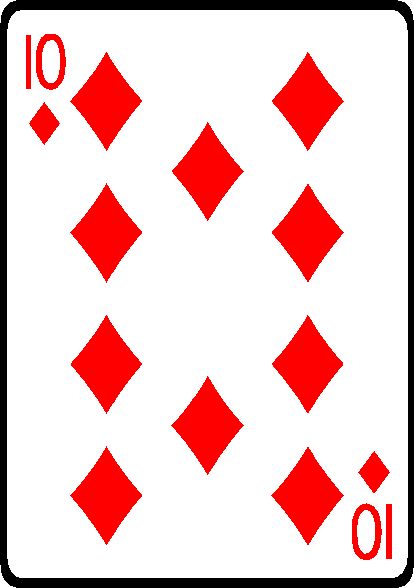
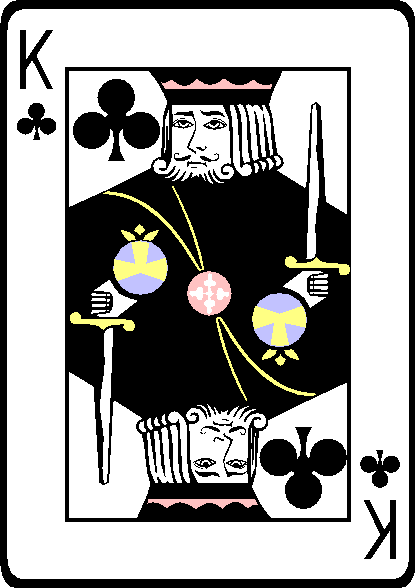
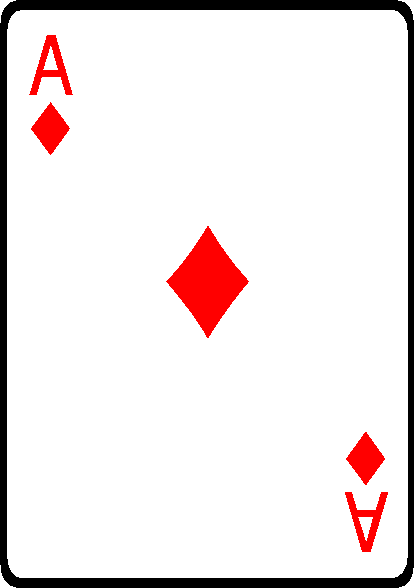
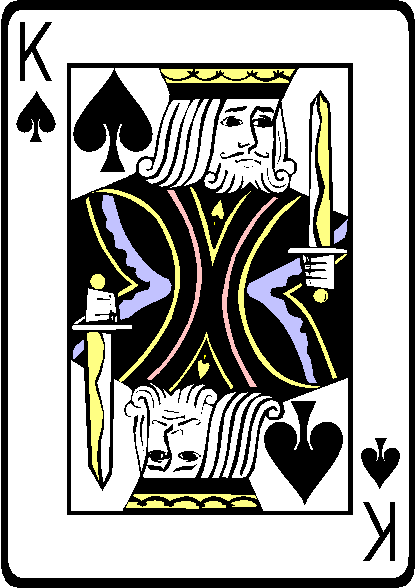
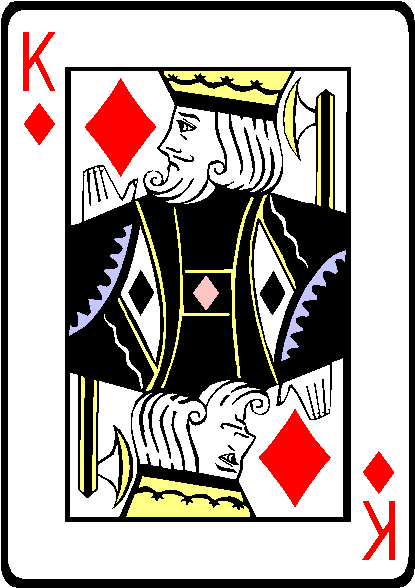
Letís say that the result of the bingo pattern is a prize of 125 credits, which translates to a four-of-a-kind winning hand in video poker. However, on the draw you decide to go for the royal flush instead. A Genie (or other character) will appear on your screen and change your hand to four Kings (and the 125-coin payout, which corresponds to the predetermined prize from the winning bingo pattern that you got).
Some casino folks say the "Genie" feature on Class II video poker machines is good for novice players because it will correct a playing mistake and show them the optimum strategy (i.e., the winning hand created by the "Genie"). Personally, I think this is an expensive way to learn the playing strategy for a video poker game. (Itís better to learn the playing strategy at home on your computer using a video poker training software, and then bring a strategy card with you when you play.)
Expected Return
Players can look at the Pay Table for any Class III video poker game and know what the ER is for the game (there is plenty of information available that lists the ER for different video poker games). However, on a Class II machine, you have no idea what the ER is for the game (thatís because the results are predetermined based on the bingo draw.)
In addition, keep this point in mind. In many states, traditional casinos must report their return percentages to state gaming agencies and this information is often reported to the public. Since Native American tribes are a sovereign nation, their casinos are not subject to state regulation or public reporting of the return percentages on their machines.
Is it a Class II or III Machine?
Youíll know if the video poker machine you are about to play is a Class II machine if you see a display of a bingo card.
Bottom Line
Class II video poker machines are bingo games in disguise. There is no skill involved in playing them and the return on the game is unknown to players. Play these machines for entertainment. Class III video poker machines are a skill-based casino game where the skill of the player can influence the outcome. With a Class III video poker machine, itís relatively easy to determine the ER of the game.
Acknowledgement: I want to thank Jim Coleman from IGT for the time he spent on several phone conferences with me, and the face-to-face discussion we had at the Global Gaming Expo in Las Vegas, explaining how Class II video poker machines work.
|
|
©2015, DeepNet Technologies. No material to be copied without express permission of DeepNet Technologies.
This site developed by
DeepNet Technologies, Ontario, Canada. Contact webmaster @ bjinsider . com
if you have problems.
This site is best viewed in a 800x600 graphics mode, or higher.
